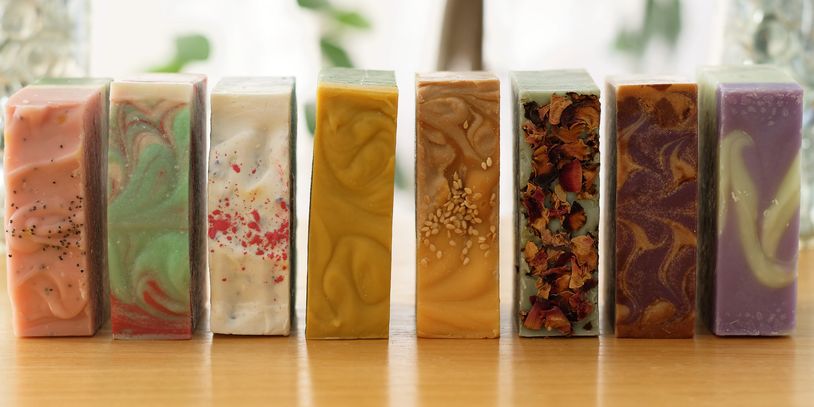Soap Facts
From Soap Ingredients to Nuts

Essential Oils vs. Fragrance Oils
Soaps for Days uses both essential oils and fragrance oils in their handmade soap recipes, and here's the difference:
Essential oils are natural extracts derived from various parts of plants. Many of them are thought to have therapeutic benefits. However, some essential oils require huge quantities of plant material to produce a small amount of oil, which makes them too expensive to use as soap ingredients. Some essential oils are not sustainable because they come from scarce wild resources. With careful education on the part of the soap maker, there are many essential oils that are both affordable and safe to use when making soap, and they contribute to a lasting and beautiful scent.
Fragrance oils are created in a lab from synthetic and/or natural perfume components. They have been thoroughly tested for safe use in soap and cosmetic products. Since the selection is not limited by what can be distilled from plants, the array of fragrance oils is limitless! Strawberry, coconut, apple, honeysuckle, and Clean Cotton are just a few examples of popular fragrance oils. Perfumers are unlimited in the blends they can create, including scents that imitate well-known perfumes. Beautiful replicas of high end essential oils are also available in fragrance oils, like rose, patchouli and sandalwood, some containing nature identical chemical components.
How to Care for Your Handmade Soap
Because handmade soap is rich in glycerin, the humectant that is missing from commercial soaps, it attracts moisture. It is best to keep your soap in a draining soap dish that allows it to dry between uses. If it is left in an undrained soap dish or is in the path of the shower spray, it will become mushy and not last as long as it should. Choose a soap dish that allows your soap to drain.
Store unopened soap in a cool, dry place to maintain hardness.
What is Soap?
Sometimes people express concerns about the presence of sodium hydroxide in the ingredients. It sounds like a chemical. Sodium hydroxide, also known as lye or caustic soda, is the alkali of sodium that has been used for centuries to make soap. On its own, it is a dangerous, corrosive compound. When lye is mixed with water and combined with vegetable or animal fats in proper proportions, the chemical reaction transforms the solution into soap and glycerin. This process is called "saponification," which literally means "the making of soap." No lye remains in the soap after this process. If a product is not made by this method, it is not soap, by definition.
Bar Soap vs. Liquid Soap: The Environmental Impact
According to a study done by the Institute of Environmental Engineering in Zurich, it takes more than six times the amount of liquid soap as bar soap to accomplish the same tasks in personal hygiene. They also found that liquid soap has ten times the carbon footprint when they compared production methods. This is due to the harmful chemicals used in manufacturing, disposal of waste water, and the wasteful plastic packaging. Storage and transport of bar soap is more efficient because of its compact, stackable shape. Something to think about.
